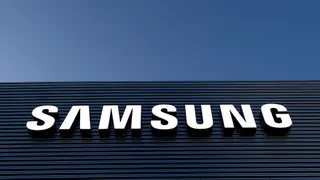- By Prateek Levi
- Wed, 19 Nov 2025 05:54 PM (IST)
- Source:JND
China’s Xpeng isn’t just making EVs anymore—it’s taking a bold swing at the humanoid robot race. The company’s latest prototype, Iron, is being positioned as a direct challenger to Tesla’s Optimus, but with a philosophy that feels surprisingly human. Instead of focusing solely on precision or industrial-grade performance, Xpeng is leaning heavily into emotional design. It wants people to actually touch these machines — even hug them.
CEO He Xiaopeng recently showcased the newest version of Iron, describing the company’s ambition to build bipedal robots that are “highly human-like”. On the earnings call, he explained that adding fake muscles and “bionic skin” wasn’t just for realism—it actually made people feel more at ease around the robot. According to him, this tactile familiarity is a strategic differentiator in a market that’s still figuring out where humanoid robots fit.
“This is very exciting because traditional robots really were not that attractive and appealing for human beings to give them a hug,” Xiaopeng said — a line that perfectly captures Xpeng’s bet: if users feel comfortable touching a robot, they might also be more willing to let one help in their daily lives.
Recommended For You
How Xpeng Wants Iron to Stand Apart
Iron doesn’t follow the usual sci-fi-meets-industrial-design playbook. Xpeng is building the robot with an unmistakably human silhouette and plans to offer both male and female versions. The company even says body types will be customisable. During its reveal event, Xpeng employees cut through the robot’s flexible “skin” to prove there wasn’t a performer inside — a nod to one of Tesla’s most controversial moments.
At Tesla’s 2021 AI Day, the company introduced Optimus with a performer in a robot suit. And even in 2024, when actual units were shown, they were operated remotely, raising questions about the robot’s autonomous maturity. Xpeng is leaning into these contrasts to position Iron as more complete and more transparent about its capabilities.
Looking ahead, Xiaopeng told analysts that Xpeng plans to sell one million Iron units annually by 2030, with mass production slated for late 2026. He believes humanoid robots could eventually outgrow the car market itself, with early use cases likely to appear in retail and guided-tour environments. Iron will even start appearing in Xpeng stores next year as part of a phased rollout.
Meanwhile, Tesla is preparing its own mass-production timeline. Optimus is expected to enter large-scale manufacturing by late 2026. Elon Musk has repeatedly said Optimus could become Tesla’s biggest product, and Tesla’s AI head has warned employees that 2026 will be the “hardest year” of their lives as the company pushes toward that goal.
Xpeng, founded in 2014, has quickly risen to become one of Tesla’s strongest rivals in China’s EV landscape. The Guangzhou-based company has posted record sales this year and is approaching profitability. Alongside Iron, Xpeng plans to launch seven new vehicles next year—including three robotaxi models—and aims to mass-produce its $280,000 flying car by 2026.
ALSO READ: Cloudflare Outage Explained: CEO Details How A Single Internal Error Broke The Internet For Five Hours
Both companies see humanoid robots as the next frontier. But Xpeng is making a very different bet: in the future, the robots that win might not be the strongest or the smartest but the ones people feel comfortable walking up to, talking to, and yes, even hugging.





